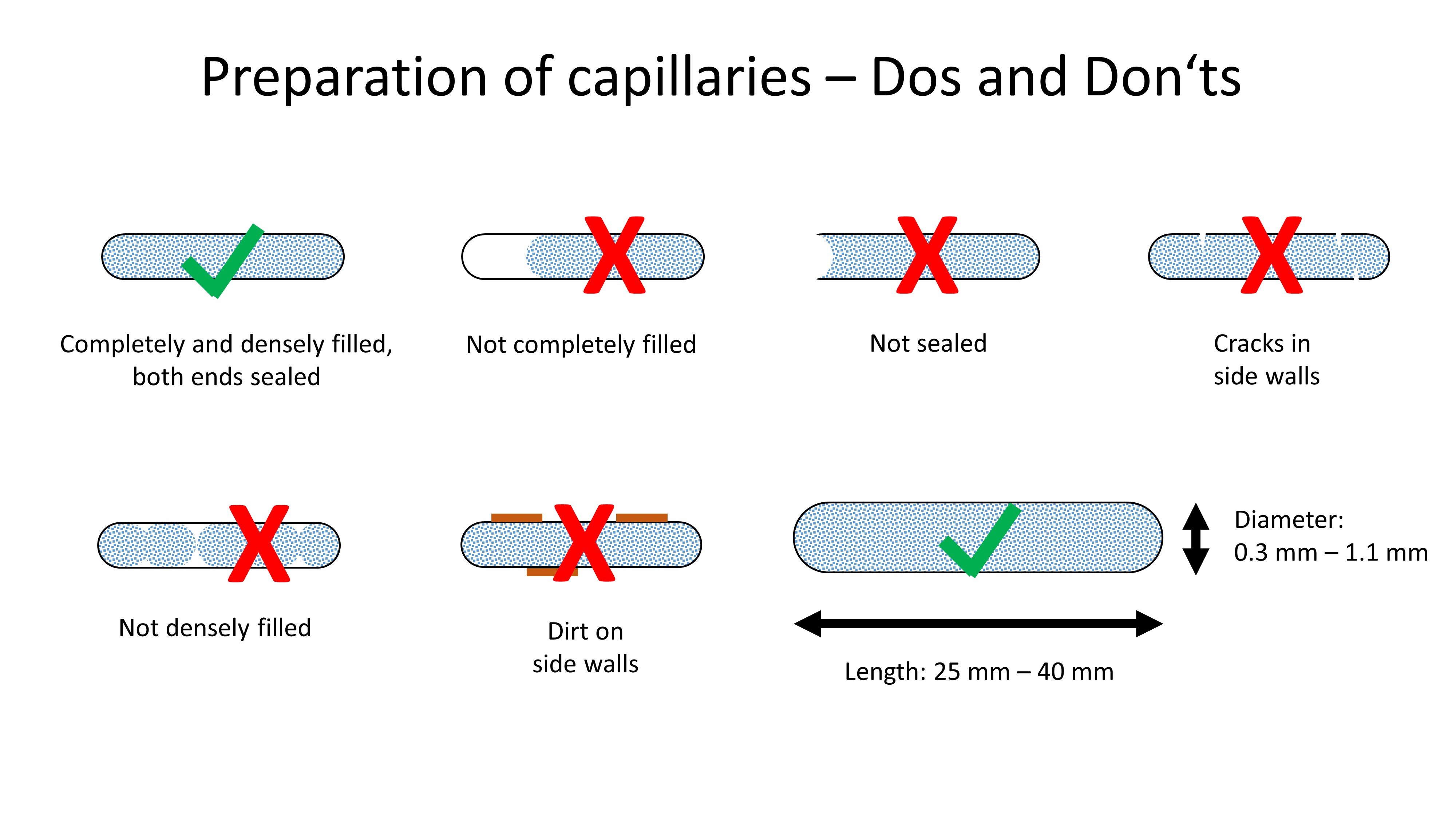This page should help you to prepare capillaries following the standards of the P02.1 beamline. Please be aware that if you do not follow this instruction, your capillaries cannot be measured in the rapid access program or will not fit into our sample environments, such as the automatic sample changer robot EMMA or into our heating and cooling environments.
For measurements with our robot, our cryostreamer and/or hot-air-blower, for manual measurements and for users of the rapid access program
In order to work with samples in capillaries, especially if they are spun during an experiment, special requirements need to be met. Please read this guideline carefully, especially for the robot measurements, as we have to reject samples/capillaries which do not meet the following criteria.
Types of capillaries
In principle, most of the common material types are allowed at our beamline:
- Glass
- Borosilicate Glass
- Quart Glass
- Kapton / Polyimide
Please note that we currently do not allow the usage of sapphire capillaries, as the single crystal reflections of sapphire capillaries usually saturate our detector, which leads to significant worsening of the quality of your measurements.
Regarding the shape of the capillary, you can use drawn as well as extruded capillary types.
Size and length of capillary
Since the capillaries must fit into our capillary holder system, they have to meet special requirements regarding their dimensions.
Diameters: 0.3 - 1.1 mm
Length: 25 - 40 mm
The minimum length is required in order to fit the capillary into the brass pins, which are later fixed into our sample holders. The maximum length ensures that the capillary will not wobble during the measurement.
A minimum diameter of 0.3 mm ensures that capillaries are still easy to handle. The diameter refers to the outer diameter.
Filling of capillaries
No matter if you fill your capillary with a powder or a liquid sample, you have to ensure that the X-ray beam hits the sample and that the sample is not moving while it is spun. The following images shows how capillaries should be filled.
Short list for mandatory properties of a filled capillary:
- Lenght of capillary: 25 to 40 mm
- Outer diameter of capillary: 0.3mm to 1.1 mm
- Material: Glass, Borosilicate glass, Quartz glass, Kapton
- Capillary needs to be densely filled and intact.
- The sealing at the end of the capillary must not be larger than the capillary itself!
- Capillaries with leakages of powder or liquid due to a not proper sealing will not be measured in the rapid access or mail-in program!
For measurements with the ceramic heater
For measurements with the ceramic heater, a capillary should be used at its full length, which means the upper conical part can be used to put into our gallow system. This is required in order to make sure, that the capillary tip and the capillary side walls are not touching the heater as a contact of the capillary to the heater can result in an undesired movement of the capillary during heating.
However, if you need to close your capillary at the end, because your materials are air sensitive during the heating process, you have to use heat-resistant glue or something similar in order to seal the capillary.
For measurements in the multi-sample holder of the cryostat
Under construction!
Where to buy capillaries?
Capillaries can be bought by different manufacturers like WJM (http://www.wjm-glas.de/#portfolio) or Hilgenberg (https://www.hilgenberg-gmbh.de/en/products/test-tubes/sample-tubes/). Please note, that we do not have contracts with these companies! The names of the companies are just displayed as examples here!
